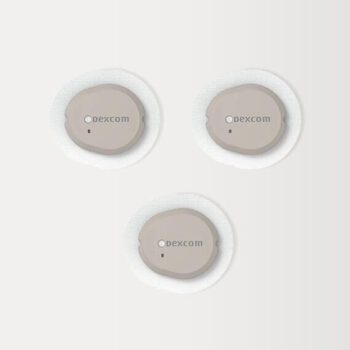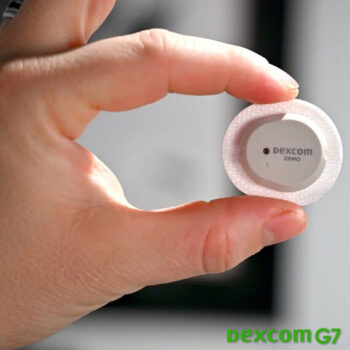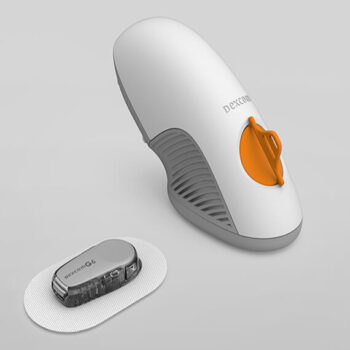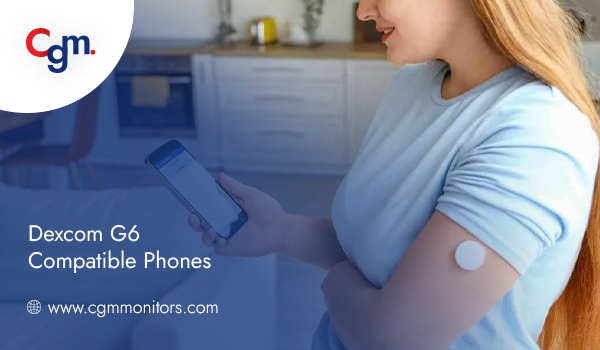Table of content
Introduction
Do you want to know about Dexcom G7 sensor failure and the arrangements you can make to report this issue? With this advanced Dexcom G7 monitoring system, people with diabetes can manage their blood sugar levels efficiently.
However, it may come across sensor-related challenges that can affect its accuracy and dependability.
In this blog, we will see common problems related to Dexcom G7 sensor failure. You will know about the possible reasons behind such issues, and which steps you can take to resolve them.
To Understand the importance of maintaining accurate glucose readings, we are dedicated to providing you with valuable visions to help you overcome any sensor-related problems.
Understanding Dexcom G7 sensor failure
Dexcom G7 sensor failure states the situations where the continuous glucose monitoring system fails to deliver exact and consistent readings. In this way, they leave users uncertain about their blood sugar levels. Such inaccuracies can lead to incorrect insulin dosing decisions, potentially impacting diabetes management as well as overall health. Let us discuss some common types of errors that cause Dexcom G7 sensor failure
Dexcom G7 false low reading
The Dexcom G7 sensor may show a false low reading. Such readings are highly troublesome for the patients. It can be due to multiple reasons. One of the most common reasons in this matter is compressed or broken sensors.
No reading at all
Sometimes, Dexcom G7 may show no reading at all. One of the primary reasons for this Dexcom G7 sensor failure is that it is far away from the display device. Sometimes when you check it under water you may see no reading at all.
Connectivity issues
Connectivity issues are included in the most common ones while using the Dexcom G7 sensor. It may be due to the error of the mobile App. This failure can also occur because of poor Bluetooth signals.
See also: Reasons for Dexcom G6 Sensor Failure A Comprehensive Analysis
Common signs of sensor failure
Identifying potential sensor failures is vital for prompt action. Here are some common signs that may indicate Dexcom G7 sensor failure:
Inconsistent readings: Frequent fluctuations or sudden drops/spikes in glucose readings that don’t match your physical condition or other blood sugar measurements.
No signal or communication error: Your Dexcom G7 receiver or app displays “No Signal” or “Communication Error” messages.
Calibration issues: The sensor may prompt frequent calibrations, yet the readings remain inaccurate.
Unreliable trend arrows: The trend arrows indicating blood sugar direction may not align with how you feel.
Sensor not lasting full 10 days: Premature sensor failure, where the sensor stops functioning before the recommended wear time.
Potential causes of Dexcom G7 sensor failure
Understanding the possible causes behind sensor failure can help you troubleshoot and address and troubleshoot the issue more efficiently. Numerous issues may contribute to Dexcom G7 sensor failure:
Insertion problems
Inaccurate readings occur when the insertion of the sensor is improper. If the sensor is not firmly placed or injected at an accurate angle, it will not function optimally.
Sensor aging
As the sensor ages, its precision may fail, leading to inconsistencies in glucose readings with time. Regular sensor replacement is essential to maintain reliable results.
Sensor calibration
Imprecise adjustment or failure to adjust the sensor when prompted can affect the performance of system which leads to defective readings.
Compression and pressure issues
When extreme pressure or compression on the sensor site is applied, particularly during physical activities or sleep, can affect the sensor’s ability to measure the glucose levels accurately.
Interfering of medications or supplements
Certain medications or supplements can interfere the sensor’s readings, which causes imprecisions.
Dexcom G7 Sensor Failure
For a better understanding of Dexcom G7 sensor failure, let’s discover some troubleshooting steps:
Double-check sensor insertion
If you are suspicious about a sensor issue, start by confirming suitable sensor insertion. Follow the guidelines of the manufacturer wisely and make sure the sensor is firmly positioned on a dry, clean skin site.
Monitor sensor age
Keep track of how long the sensor has been in use. Replace it after ten days, as recommended by Dexcom, to maintain accurate readings.
Calibrate correctly
Calibration is not required by Dexcom G7. However, if you want to calibrate the sensor you must do it as prompted by the device. Make sure you follow the calibration process accurately. Use fingerstick tests to verify and calibrate the readings when needed.
Avoid compression
Be mindful of applying excessive pressure or compression on the sensor site to prevent interference with glucose readings.
Account for medications and supplements
If you are taking medications or supplements that might impact glucose levels, discuss this with your healthcare provider and consider additional testing to cross-verify readings.
Contact Dexcom support
If you have followed the troubleshooting steps and are still experiencing Sensor Failure, reach out to Dexcom’s customer support. They will provide you with further assistance. Dexcom can provide personalized guidance and may offer a replacement if necessary.
Go for a better option!
If you are facing Dexcom G7 sensor failure problems frequently, you can opt for a better option. Either you can replace the previous device or buy Dexcom G7 sensor from a reliable platform such as CGM Monitors. It is because we offer original devices at market-competitive prices.
If you are looking for a better option, you can visit our website and find CGM devices of multiple brands. Buy a Freestyle Libre 3 sensor in replacement. It is because this innovative device by Abbott comes with outstanding features as well as high accuracy. You will also face fewer sensor failure problems with this device.
Conclusion
Dexcom G7 sensor failure can be an annoying experience for people trusting continuous glucose monitoring to effectively manage their diabetes. To Understand the mutual signs and potential causes of Sensor Failure is critical to take quick actions and maintain the correct glucose readings.
With the help of Dexcom’s customer service and by following the provided troubleshooting steps, you can have a smoother experience with the Dexcom G7 system and can effectively manage your diabetes.
Remember, practical management is vital to success in diabetes maintenance, and we can support you on your journey for better well-being and health.
Frequently Asked Questions
What is Dexcom G7 sensor failure?
Dexcom G7 sensor failure refers to situations where the continuous glucose monitoring system fails to provide accurate and reliable readings, leaving users uncertain about their blood sugar levels.
Is sensor calibration required for Dexcom G7?
No, calibration is not required for Dexcom G7. However, if you choose to calibrate the sensor, do it as prompted by the device and use fingerstick tests to verify and calibrate readings when necessary.
What if I am still experiencing Dexcom G7 Sensor Failure despite troubleshooting?
If you have followed the troubleshooting steps and are still facing sensor failure, reach out to Dexcom’s customer support for personalized assistance. They may offer further guidance or a replacement if needed.
Are there alternative options to Dexcom G7 if I frequently face sensor failure issues?
If you face Dexcom G7 sensor failure frequently, you can consider alternative options. One option is to replace the device with another Dexcom G7 sensor from a reliable platform such as CGM Monitors. Alternatively, you may explore other devices like the Freestyle Libre 3 sensor which may offer a lesser chance of sensor failure.
What is the key to effectively managing diabetes with Dexcom G7?
Proactive management is essential for effectively managing diabetes with Dexcom G7. Understanding the signs of sensor failure, taking prompt action, and seeking support from Dexcom’s customer service are crucial steps to maintain accurate glucose readings and improve your overall diabetes care experience.













Pingback: Dexcom G7 Falling Off Problems & Top Tips for Secure Wear
My dexcom g7 has failed 50% of the time. Can you explain what is going on. It fails as soon as it’s put on during calibration. I’ve lost 3
If you’ve set a calibration, you might notice “Calibration Not Used” in your history tab.This means your Dexcom G7 sensor couldn’t use the calibration you entered, so your glucose readings may not match your blood glucose meter. If you see this message, wait a bit for the sensor to adjust. Afterward, try calibrating again in about an hour using a fresh fingerstick/finger prick.
To ensure an accurate blood glucose meter reading, follow these steps:
Wash your hands with soap and water.
Dry your hands.
Take a fingerstick/finger prick.
We are looking forward to your feedback.
Have used DexcomG7 for a while but lately it’s been loosing signal. Tried all the trouble shooting items but can’t figure out the problem since it worked so well before.
Had very few issues with my G6. I switched to the G7 and have issues daily, especially what I believe are false low readings. Also it will not calibrate. I’m considering either going back to a G6 or to another brand of monitor.
Hello Jeff. Sorry to hear about any inconvenience experienced. Regarding the calibration issue, please try restarting your phone once, if not already tried. And regarding the false low readings, you may check your readings using fingerstick to double check if the readings are correct or not.
In case the issue persists, please file a complaint to Dexcom and they shall get back to you soon. They have a live chat support from 5:00 am to 5:00 pm PST. And their general call support is available from Monday to Friday 6:00 am – 5:00 pm.
I am having nothing but problems with the G7. Numerous false low readings and too many down time issues for temporary sensor issues. I have had to replace four sensors due to these issues with no reliable solutions. How do I get reimbursed four these four sensors? Not too happy with this product!
Hello Thomas. Sorry to hear about any inconvenience you may have experienced. Some people experience low readings due to compressions, this happens when you wear your sensor at a place where it is being pressed. Reportedly, many people have changed the place of insertion, such as abdomen (2 – 3 inches apart from belly button) and stopped experiencing such lows.
As far as the issues you have experienced are concerned. We would suggest you to please call Dexcom and file your complaint.
Put on new sensor last night,middle of the night said need to replace sensor. Sensor stoped working.tried everything.
We feel sorry to hear about any inconvenience you may have experienced. Please file a complaint with Dexcom and they will assist you accordingly.
I can’t get the dexcom G7:to release the button would not work the number is 7664 on the sensor.